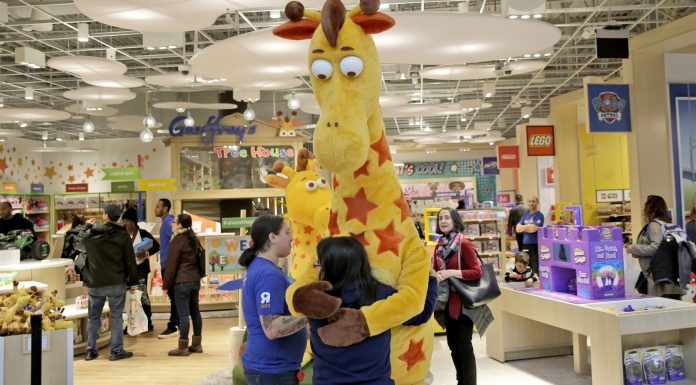(Liz Weston, NerdWallet) Many popular toys may sell out long before the holidays, thanks to ongoing pandemic-related disruptions. This could be a disaster — or a great opportunity to reshape how we celebrate.
We can shop earlier and more thoughtfully, resisting the last-minute scramble for “must-have” items that really aren’t. We can choose classic over trendy, handmade over mass-produced. We can swap experiences for stuff and even make this a learning opportunity for our kids.
This approach requires some strategizing but could result in a saner, less stressful holiday.
WHY TOYS MAY BE IN SHORT SUPPLY
Holiday shortages are nothing new. Most years, some trendy toy or gaming console becomes the hot, hard-to-find item when manufacturers and retailers misjudge demand.
What may be different this year is the number of toys in short supply. Most toys and electronics are manufactured in Asia, but bottlenecks at ports are delaying deliveries, while shipping costs have skyrocketed. The cost for shipping containers has risen during the pandemic from about $3,500 to “well over $20,000,” says Jonathan Gold, vice president of supply chain and customs policy for the National Retail Federation.
“The supply chain throughout the pandemic has been stretched from end to end,” Gold says.
Higher costs are often passed along to consumers as higher prices. That, and the potential for shortages, should encourage people to start shopping as early as possible, says Jillian Wahlquist, vice president of Tom’s Toys , an independent retailer with three locations in California.
“If there’s a special toy or something that parents are really looking for, buy it now,” Wahlquist says.
HOW TO AVOID THE MAD SCRAMBLE FOR TOYS
Of course, panic buying early in the season can be just as destructive to your budget as waiting until the last minute. Consider drafting a holiday budget now that incorporates all your expected costs, including gifts, decorations, entertaining and travel. Write down all the people you expect to buy presents for, along with the amount you intend to spend, then make adjustments to keep your spending in line with your means to avoid going into debt.
If you’re buying a gift for a child and not sure what they want, or are concerned that their interest will wane by the holidays, consider some alternatives.
The first substitute is to choose classic toys that retain their appeal over time. Board games, art supplies, crafting materials and building toys such as wooden blocks are some possibilities.
Another option: handmade gifts. If you aren’t crafty, you can buy wooden toys, stuffed animals and other handmade options at crafts fairs, farmers markets and online creative marketplaces like Etsy. These can get pricey, but the quality and charm may justify the cost. Plus, you’re benefiting individuals and small businesses rather than retail giants.
Giving experiences can be another great option, especially for teenagers. Researchers at the University of Illinois Chicago found that kids ages 3 to 12 prefer material gifts, while older children get more happiness from experiences.
This column was provided to The Associated Press by the personal finance website NerdWallet. Liz Weston is a columnist at NerdWallet, a certified financial planner and author of “Your Credit Score.”



